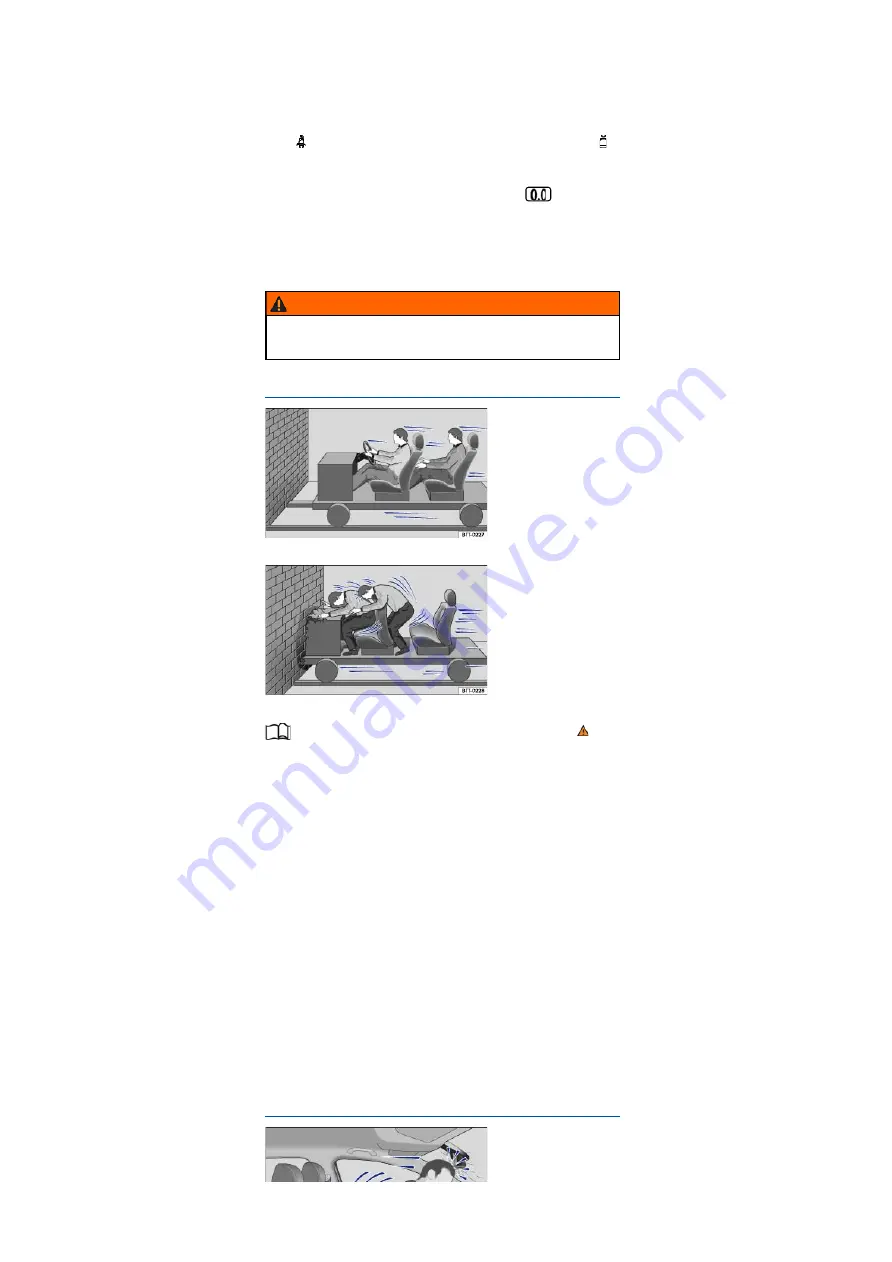
Belt status display for the rear seats
After the ignition has been switched on, the belt status display
⇒
Fig. 32
on the instrument cluster
display shows the driver whether the rear seat passengers have fastened their seat belts. The
symbol
indicates that the passenger on this seat has fastened their seat belt. The symbol
indicates that the seatbelt has not been fastened.
The belt status display will be shown for approximately 30 seconds if a seat belt is fastened or
unfastened on the rear seats. The display can be hidden by pressing the
button in the
instrument cluster.
If a seat belt for one of the rear seats is unfastened while the vehicle is in motion, the belt status
display will flash for a maximum of 30 seconds. If the vehicle is travelling faster than approximately
25 km/h (15 mph), a signal tone will also sound.
Frontal collisions and the laws of physics
Fig. 33
Unbelted occupants in a vehicle heading for a brick wall.
Fig. 34
Unbelted occupants in a vehicle striking a brick wall.
First read and observe the introductoryinformation and safety warnings
⇒
Introduction
The physical principles involved in a frontal collision are relatively simple. As soon as the vehicle is
in motion
⇒
Fig. 33
, both the moving vehicle and its passengers gain kinetic energy.
The higher the vehicle speed and the heavier the weight of the vehicle, the greater the amount of
energy that will have to be released in the event of an accident.
However, the most significant factor is the speed of the vehicle. For example, if the speed doubles
from 25 km/h to 50 km/h (15 mph to 31 mph), the kinetic energy increases by a factor of four.
The amount of kinetic energy depends on the speed of the vehicle and the weight of the vehicle
and passengers. The higher the speed and the heavier the weight, the greater the amount of
energy that will be released in the event of an accident.
Passengers not wearing seat belts are not connected to the vehicle. In the event of a frontal
collision they will continue to move forwards at the same speed at which the vehicle was travelling
before impact, until something stops them. Because the passengers in our example are not
restrained by seat belts, the entire amount of kinetic energy will be released only at the point of
impact against the wall
⇒
Fig. 34
.
Even at speeds of approximately 30 km/h (19 mph) to approximately 50 km/h (31 mph), the forces
acting on bodies in a collision can easily exceed one tonne (1,000 kg). These forces are even
greater at higher speeds.
This example applies not only to frontal collisions, but to all accidents and collisions.
What happens to vehicle occupants who have not fastened their
seat belts
Incorrectly fastened or unfastened seat belts increase the risk of severe or fatal injuries.
Seat belts will only offer the optimum level of protection when they are fastened and used
properly.
WARNING
















































